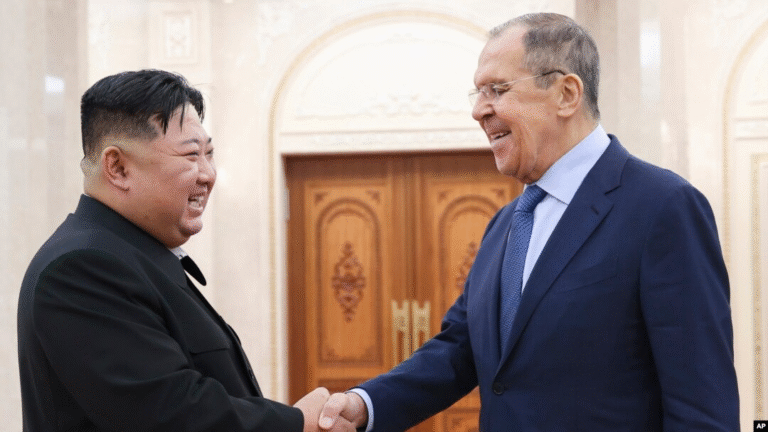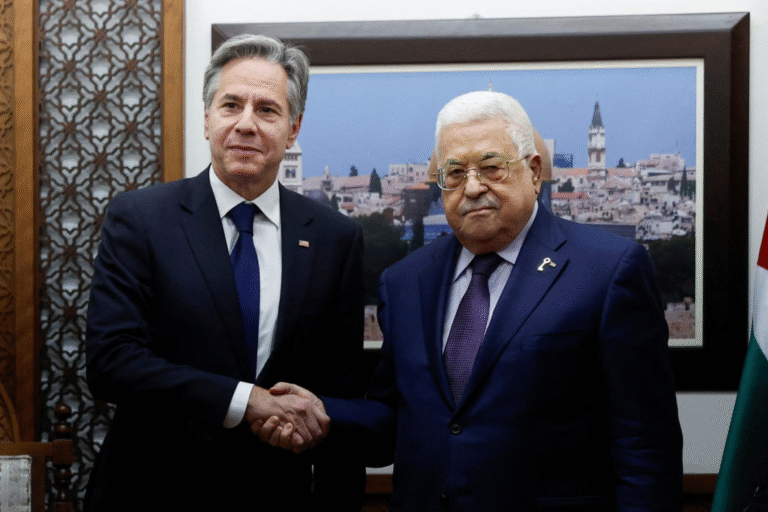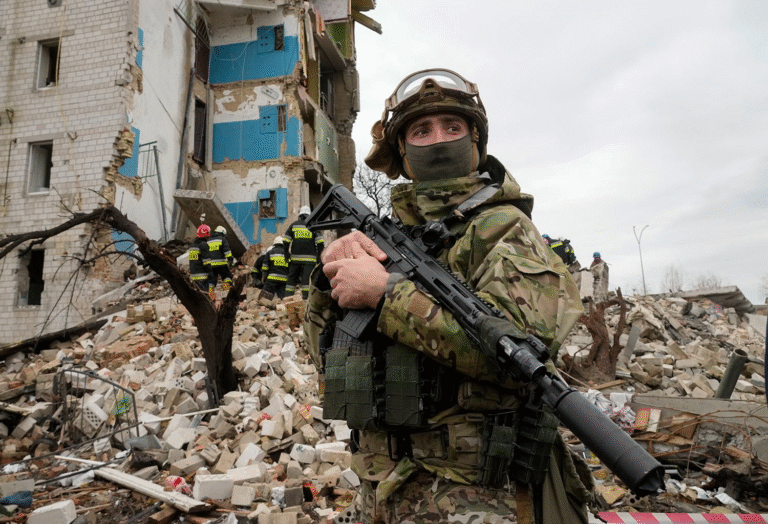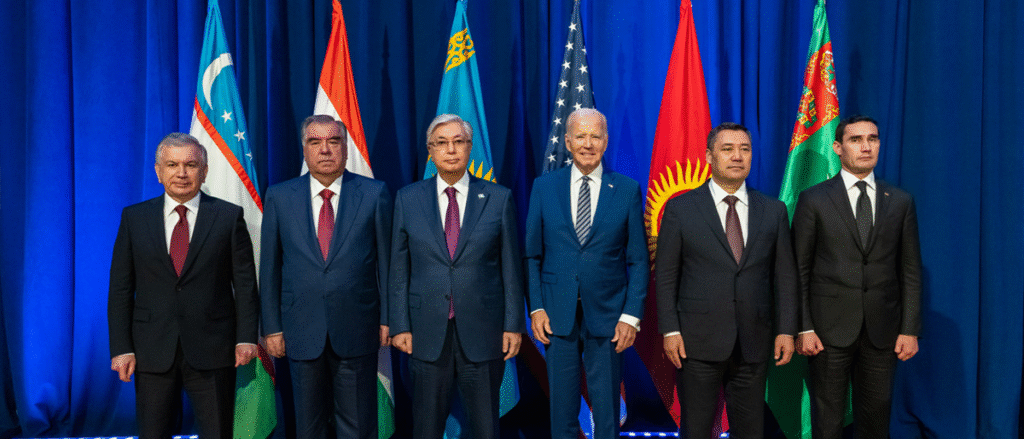
C5+1 Leaders’ Joint Statement – U.S. Embassy & Consulate in Kazakhstan
Aydan Ibadova
The America-Eurasia Center
The International Security Program
https://www.eurasiacenter.org/
Introduction
The United States seeks to sustain its influence in Central Asia through multilateral
partnerships such as the C5+1 framework. Established in 2015, the C5+1 brings together the United
States and five Central Asian republics, Kazakhstan, Kyrgyzstan, Tajikistan, Turkmenistan, and
Uzbekistan, to advance shared goals of regional security, economic development, and
environmental cooperation. Designed to promote a stable, prosperous, and sovereign Central Asia,
the platform has facilitated ministerial-level collaboration across three key domains: security,
energy and environmental sustainability, and economic growth. While the C5+1 has contributed to
stronger regional ties and policy coordination, the extent and nature of U.S. engagement through the
platform varies across presidential administrations.1
Understanding the C5+1
The diplomatic forum, launched under the Obama administration, is a strategic forum for
dialogue and cooperation between the United States and the five Central Asian republics. It was
created in response to growing regional challenges and the need for coordinated solutions on
transnational issues such as terrorism, climate change, and economic stagnation. The platform
reflects Washington’s desire to stay engaged in a region that borders key global powers like Russia,
China, and Iran.2
In February 2020, the U.S. reaffirmed its commitment to the region by releasing the United
States Strategy for Central Asia 2019-2025: Advancing Sovereignty and Economic Prosperity.
According to the document, the U.S. views Central Asia as “a strategic and commercial crossroad
of civilizations”.3 It seeks to help the region become more stable, prosperous, and sovereign, able to
freely pursue political, economic, and security partnerships. The strategy outlines six key
objectives: strengthening sovereignty, countering terrorism, promoting rule of law, fostering
economic growth, and encouraging regional cooperation.4
Since 1992, the U.S. has provided over $9 billion in direct assistance, funded more than 70
cultural preservation projects, and facilitated over 40,000 educational and professional exchanges.
The private sector has invested another $31 billion in ventures that promote local employment and
human capital development. Through C5+1, the U.S. has also coordinated over $34 million in
regional projects targeting security, environmental sustainability, and economic connectivity.5
The strategy emphasizes multilateral engagement and leverages institutions such as the
World Bank, IMF, EBRD, and ADB, which have extended over $50 billion in financing to Central
Asian states. It also supports projects like CASA-1000 and the Lapis Lazuli Corridor, aimed at
strengthening regional trade and energy infrastructure. With renewed reform efforts across Central
Asia, the U.S. sees the C5+1 as a key platform to advance democratic governance, counter
extremism, and build long-term partnerships rooted in mutual interests and international norms.6
The Biden administration has elevated the C5+1’s visibility, hosting the first-ever
presidential-level C5+1 summit in September 2023 on the sidelines of the UN General Assembly.
This marked a significant symbolic commitment to multilateralism and regional diplomacy,
especially as China and Russia attempt to increase their influence through initiatives like the Belt
and Road and the CSTO.7
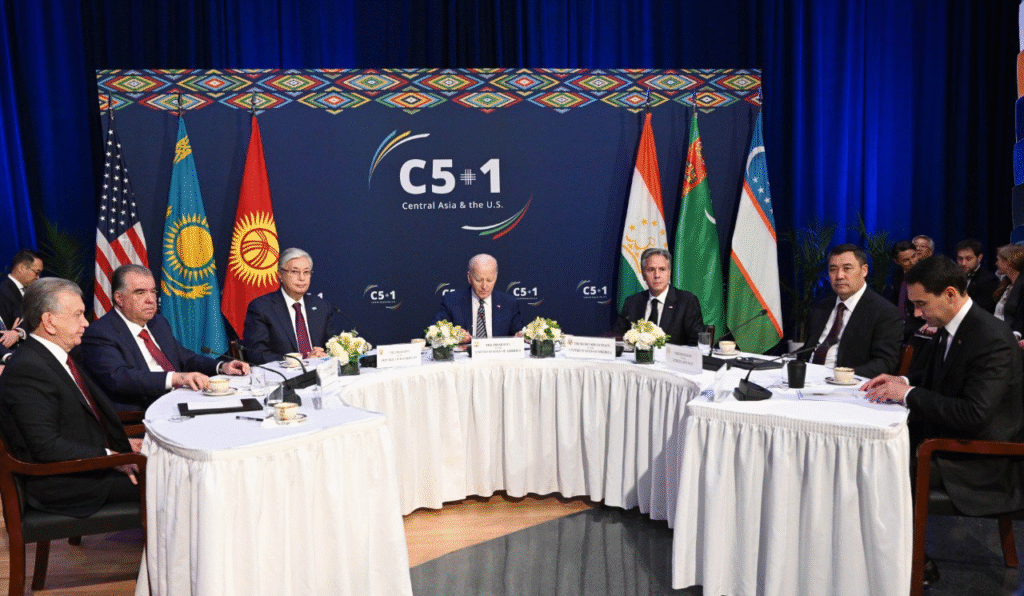
The C5+1 Leaders’ Joint Statement U.S. Embassy in Tajikistan
At first glance, the C5+1 can be considered solely as a diplomatic tool to strengthen the
relations between the U.S. and the Central Asian countries. However, it also serves as a soft-power
mechanism that reinforces the U.S. presence in a region that has historically been viewed as a part
of Russia’s sphere of influence, as it views the region as its ‘near abroad.’ This further gives the
Central Asian countries an opportunity to diversify their foreign partnerships, not rely on a single
power, and blossom as a region not controlled by Russia.
Trump’s Current Sentiment Toward the C5+1
In his second term, Donald Trump’s approach to the C5+1 framework and broader U.S.-
Central Asia relations is shaped by strategic pragmatism and economic opportunity. While the C5+1
platform is not expected to be a primary focus of Trump’s foreign policy, it remains a strong
interest for advancing U.S. interests in the region, especially in energy, trade, and critical mineral
security.8 The Trump administration views Central Asia not as a passive zone of great power
competition but as a dynamic region of sovereign states eager to diversify partnerships and assert
their autonomy from Russia and China.
Although the first Trump administration was marked by some diplomatic disengagement,
evidenced by the absence of Secretary of State Rex Tillerson from regional meetings, Trump
approved the 2019–2025 U.S. Strategy for Central Asia, which continues to shape policy today.9
This strategy remains in effect and aligns well with Trump’s foreign policy priorities of
counterbalancing China, enabling European energy independence, and opening new markets for
U.S. businesses.10
Trump’s current sentiment reflects a transactional, business-first philosophy. The
administration has signaled support for strategic projects such as the Trans-Caspian Gas Pipeline
and the repeal of the Jackson-Vanik amendment, which would normalize trade relations with major
Central Asian economies. These moves are aimed at leveraging the region’s role as an energy
corridor and its abundant reserves of critical minerals like uranium, titanium, and rare earths.11 The
Trump team also intends to revive Development Finance Corporation (DFC) agreements with
Kazakhstan and Uzbekistan, initially signed in 2020 but not implemented by the Biden
administration, to catalyze U.S. investment and strategic presence.12
While democracy promotion and human rights are likely to take a back seat under Trump’s
leadership, the emphasis on economic connectivity and sovereignty aligns with the region’s own
multi-vector foreign policy.13 Central Asia’s increasing alignment with Western markets and
infrastructure, such as through the Middle Corridor trade route and WTO integration efforts,
matches Trump’s focus on market-driven diplomacy. Notably, although the Biden administration
elevated the C5+1 to the presidential level in 2023, Trump has yet to indicate any similar symbolic
engagement.14 However, analysts have discussed that a presidential visit to Central Asia, something
no U.S. president has yet done, could become a historic gesture during Trump’s second term.
Ultimately, Trump’s sentiment toward the C5+1 is characterized by strategic continuity coupled
with renewed economic assertiveness. Even if practical participation is filtered through bilateral
agreements and infrastructure-driven diplomacy, the framework is still a valuable instrument in his
administration’s geopolitical toolbox.
- U.S. Embassy & Consulate in Kazakhstan, “C5+1,” last modified 2024,https://kz.usembassy.gov/c51/. ↩︎
- U.S. Department of State, “The United States and Central Asia: Partners for the 21st Century,” November 1, 2015, https://2009-2017.state.gov/r/pa/prs/ps/2015/11/249050.htm. ↩︎
- U.S. Embassy in Kazakhstan, United States Strategy for Central Asia 2019–2025: Advancing Sovereignty and Economic Prosperity, (Astana: U.S. Embassy in Kazakhstan, February 2020), accessed June 2025,
https://kz.usembassy.gov/u-s-strategy-for-central-asia-2019-2025-advancing-sovereignty-and-economic-prosperity/ ↩︎ - Akanksha Meena, “What Happened at the First-Ever Central Asia-US Leaders Summit,” The Diplomat, September 2023, https://thediplomat.com/2023/09/what-happened-at-the-first-ever-central-asia-us-leaders-summit/. ↩︎
- U.S. Embassy in Kazakhstan, United States Strategy for Central Asia. ↩︎
- Ibid. ↩︎
- Colleen Wood, “What Happened at the First-Ever Central Asia-US Leaders’ Summit?,” The Diplomat,
September 21, 2023. https://www.caspianpolicy.org/research/security-and-politics-program-spp/first-ever-c51-presidential-gathering-an-historic-moment-for-the-united-states-and-central-asia ↩︎ - Akanksha Meena, Second Term, New Directions: Trump’s Approach to Central Asia, The Geopolitics, January 27, 2025.https://thegeopolitics.com/second-term-new-directions-trumps-approach-to-central-asia/ ↩︎
- Meena, “Trump’s Approach to Central Asia.” ↩︎
- Eric Rudenshiold, “C5 + Trump: Getting the U.S. Down to Business in Central Asia,” The Diplomat, November 2024. https://thediplomat.com/2024/11/c5trump-getting-the-us-down-to-business-in-central-asia/ ↩︎
- Ibid. ↩︎
- Ibid. ↩︎
- Meena, “Trump’s Approach to Central Asia.” ↩︎
- Meena, “Trump’s Approach to Central Asia.” ↩︎

